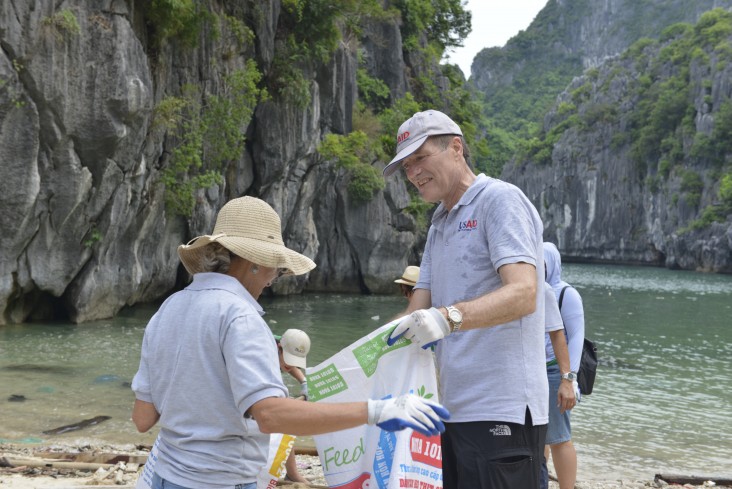Speeches Shim

Plastics are polluting our oceans, fresh water, and the food chain. Vietnam is one the world’s top five sources of plastic pollution, responsible for a significant share of the eight million tons of plastic debris that finds its way into the oceans each year. On June 14, USAID/Vietnam Mission Director Michael Greene led a coastal clean-up event in Ha Long Bay with more than 80 volunteers, including representatives from Vietnam’s tourism and hospitality sector, NGOs, USAID, and the Government of Vietnam. Participants learned about plastics alternatives, such as biodegradable products made of bamboo, cornstarch, or cassava. They also acquired knowledge on zero-waste applications for cruises and hotels which would lead to generating no garbage/trash, and saw first hand the negative environmental impact of plastic as they picked up and sorted over 1600 pounds of plastic and other trash from two beaches in Ha Long Bay.
So What? Ha Long Bay, a UNESCO World Heritage Site, is one of Vietnam’s top tourist destinations with over four million visitors each year. As tourism continues to increase in Ha Long Bay, events such as this educate tour and hotel operators on the importance of preserving the region’s natural beauty for the long-term economic viability of their businesses.
Related News
- USAID-Supported Forensic Laboratory Contributes to Prosecution and Sentencing of Rhino Horn Trafficker in Vietnam
- USAID Leverages Partnerships between Local Organizations to Deliver New HIV Pre-exposure Prophylaxis (PrEP) Delivery
- USAID Successfully Advocates for the Issuance of Two New Technical Guidelines for Children with Autism Spectrum Disorder (ASD)

Comment
Make a general inquiry or suggest an improvement.